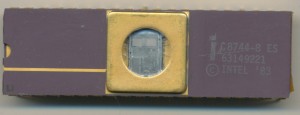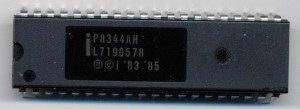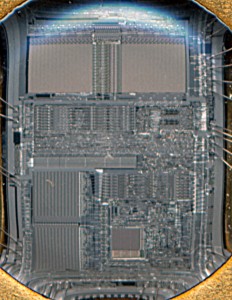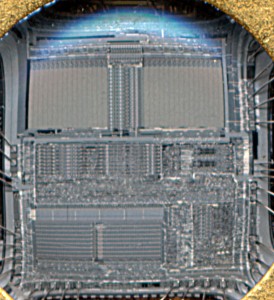CPU of the Day: Intel RUPI-44 The 8051’s lesser known cousin
In 1980 Intel released the MCS-51 family of microcontrollers, a design that would go on to become one of the pillars of the 8-bit MCU market. Initially the family consisted of the 8051, which included 4KBytes of on-chip ROM (or UV-EPROM in the case of the 8751) and 128 bytes of RAM as well as the 8031 which did not include the ROM, all program memory was off chip.
The 8051 was a wild success with Intel struggling to meet demand. Intel did not have the fab capacity to produce both the 8051, and the very in demand 8088 (thanks to IBM). In 1984 Intel opened a new fab in Albuquerque, New Mexico to build other chips, freeing up production space in the California fab for more 8051s. Even so, an $8 8051 was routinely scalped for over $200 on the grey market and waiting periods of up to a year were common in order to receive orders, with many companies on allocation. Intel licensed the design to both AMD (who built a fab in Austin to make it) as well as Signetics in an effort to keep up with demand. The hardest to get part in the industry, was the 8051 from 1983-1984.
So in the midst of this insatiable demand for an MCU that they did not have the capacity to produce, Intel releases the RUPI-44 (Remote Universal Peripheral Interface). The RUPI-44, also known as the 8044, is an 8051 with an additional 64 bytes of RAM and a full serial communication co-processor on die. Specifically it was an 8051 that handled the SDLC (Synchronous Data Link Control) protocol in hardware. Intel had an SDLC controller, known as the 8273, but it was limited to 64kbps, the 8044 could handle data transfers of up to 2.4Mbps due to the 8051 core’s high speed and close coupling of the serial controller.
SDLC was developed in 1975 by IBM and was generally used as a way for mainframes to communicate with various peripherals and terminals. It supports error correction and multi-point, point to point, and loop connections. In 1979 SDLC was standardized as HDLC (High-Level Data Link Control) which the RUPI-44 also supports. While popular in the 70’s and 80’s its use has faded out, though it achieved some long lived use in Europe running the Intel derived BITBUS protocol well into the 90’s.
Adding this functionality came at a high price to the 8051. The SDLC controller needed room to buffer its data, thus 64 more byes of RAM had to be added to the 8051. The SDLC controller itself took a significant die area, even on the 3 micron HMOS-II process. The original 8051s were made on an NMOS process. In 1986, after the huge manufacturing crunch of 1983-1984 the 8044 still was significantly more expensive then the 8051. An 8344 (8044 with no on board ROM) was $31, while a comparable 8031 was only $9. For a cost saving of $22 per chip, designers did not take to the 8044 em masse. Most designs that did not explicitly need SDLC made do with other serial protocols, both standard and proprietary. Intel continued to make the RUPI-44 up through late 1997 in all versions: 8744 (UV-EPROM), 8044 (Mask-ROM) and the 8344 ROMless. A product improved version was released in the mid 1980s called the 8044A and 8344A which decreased power requirements and improved some drive strengths. The 8744 however, did not receive these improvements, continuing to be made in its original form. Tied to what was essentially a legacy protocol the RUPI-44 has faded into obscurity, though is available from Rochester Electronics, and InnovASIC, both companies specializing in remaking obsolete components. Today’s 8051s continue to integrate communications standards such as CAN, I2C, SPI and even complete IP based networking. They do so at prices of less then $1 per chip, leading to the continuing success of the 8051 family, and the downfall of the RUPI-44.
Sources:
Infoworld Jan 9-16, 1984 pgs 99-100
Intel RUPI-44 Datasheet
Intel Pricelist 1986
Intel Pricelist 1996






September 22nd, 2022 at 8:37 am
Tengo un procesador dañado y ocupo saber dónde lo consigo es el P8344AN